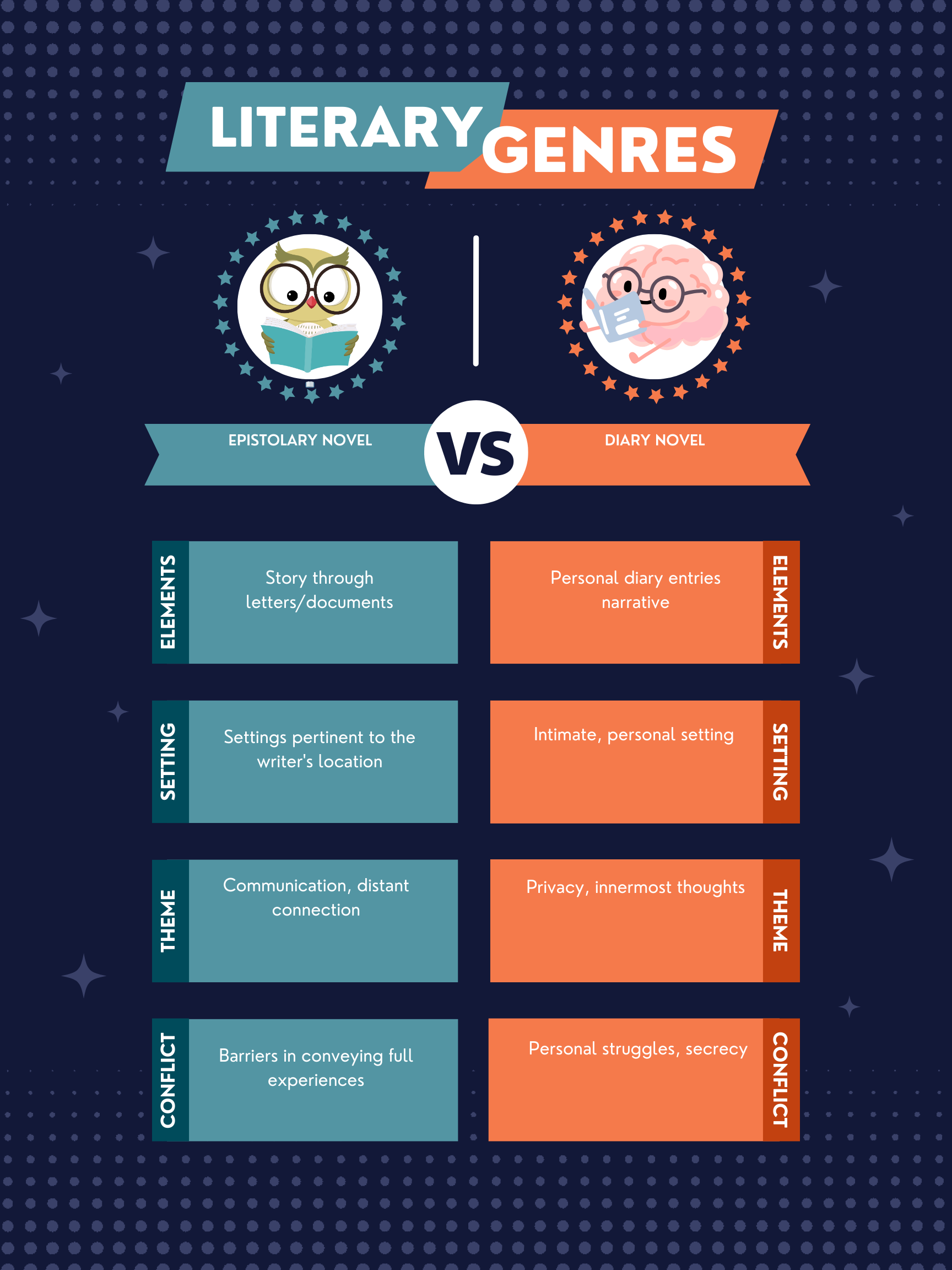Epistolary Novel is a novel written as a series of documents, typically letters or emails; Diary Novel is written in the form of a diary or journal, presenting the narrator’s daily experiences and inner thoughts.
Epistolary novels and diary novels each offer a distinct lens through which stories are told, inviting readers into the intimate worlds of their characters. Let’s navigate these captivating narrative paths. 📖✉️📓
Epistolary Novel
An epistolary novel utilizes letters, diary entries, newspaper clippings, emails, or other document forms to tell a story. This structure allows for multiple perspectives and a deep dive into characters’ private thoughts. “Dracula” by Bram Stoker is a prime example, combining journal entries, letters, and newspaper articles to unfold its chilling tale.
Diary Novel
Diary novels are presented as the diary or journal of the protagonist, offering an intimate portrayal of their thoughts, feelings, and experiences. This format deeply personalizes the narrative, providing direct insight into the character’s inner world. “The Diary of a Young Girl” by Anne Frank is a powerful example, sharing profound observations and experiences through her diary entries during World War II.
Summary
| Literary Device | Definition | Purpose | Usage | Relevant Examples |
|---|---|---|---|---|
| Epistolary Novel | A novel written as a series of documents, such as letters or emails. | To provide multiple viewpoints and deepen the narrative. | Historical fiction, horror, romance. | “Dracula” by Bram Stoker. |
| Diary Novel | A novel written in the form of a diary or journal. | To present the narrator’s personal experiences and thoughts. | Autobiographical fiction, coming-of-age stories. | “The Diary of a Young Girl” by Anne Frank. |
Writing Tips
For Epistolary Novels:
- Vary Your Voices: Use different characters’ writings to provide varied perspectives.
- Keep It Realistic: Ensure the documents feel authentic to their supposed authors and contexts.
- Utilize the Format: Use the document format to reveal plot points indirectly, building suspense or mystery.
For Diary Novels:
- Maintain Consistency: The diary entries should reflect the narrator’s voice and evolution over time.
- Explore Intimacy: Use the diary format to delve into deep personal thoughts and feelings.
- Incorporate Realism: Even fictional diaries should mirror the erratic nature of real diary-keeping, with varied entry lengths and subjects.
FAQs
Can a novel be both epistolary and diary format?
Yes, some novels blend the two, using diary entries as part of a wider collection of documents.
How do these formats affect the reader’s connection to the character?
Both formats offer intimate insights into characters, but diary novels often provide a more direct connection to the narrator’s inner world, while epistolary novels offer a broader range of perspectives.
Exercise
Consider this excerpt: “March 15th – The news today took us all by surprise. I never thought the war would reach our little town. The letter from James only deepens my worry.”
Answer: This passage suggests a diary entry with mention of a letter, indicating it could belong to a diary novel, especially with the direct date reference and first-person narrative reflecting personal thoughts.
Other Interesting Literary Device Comparisons
- First-Person vs Third-Person Narration: These perspectives offer different levels of intimacy and omniscience in storytelling.
- Flashback vs Foreshadowing: Flashbacks take readers back in time for backstory, while foreshadowing hints at future events.
- Static vs Dynamic Characters: Static characters remain unchanged throughout a story, while dynamic characters undergo significant internal changes.
Exploring these devices deepens our appreciation of the craft behind storytelling, revealing the myriad ways writers connect with their audiences. 📘🔍

